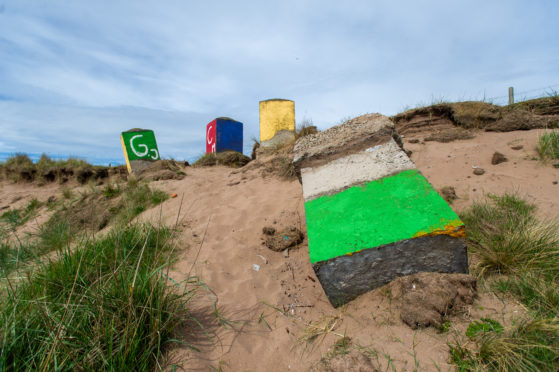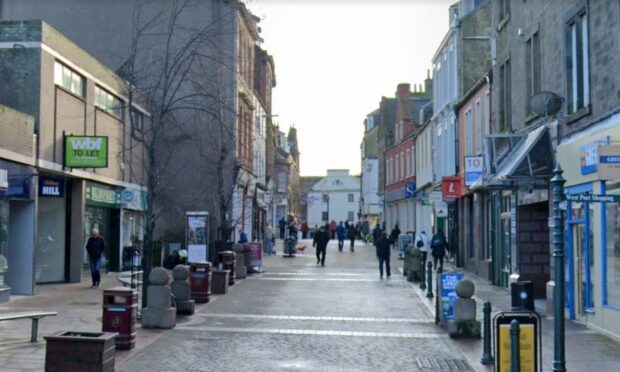Coastal erosion has brought historic anti-tank blocks tumbling down onto the beach in Arbroath.
The concrete “dragon’s teeth” at Elliot were one of the many forms of defence designed to repel landings on the beaches during the Second World War.
The anti-tank cubes were made of reinforced concrete in 1940 and 1941, around 5ft to a side and cast in situ in rows, often two or three deep.
The crumbling wartime defences sit close to Arbroath golf course, high on the dunes between Elliot and East Haven.
North East region Scottish Conservative MSP Liam Kerr said: “Since 2016 I have been working with agencies to help protect the coastline at places like Montrose.
“Unfortunately, it’s too late for these historic features many of us grew up with. Tens of thousands of sea defences were ready to protect Britain.
“Thanks to the fact Germany was fighting a war on two fronts, and the mettle of our RAF and Royal Navy, they never needed to be used. But it’s daunting to think how close that hour came.”
The anti-tank blocks were used to defend the UK against a possible enemy invasion after defeats in Northern France early in the war.
General Edmund Ironside decided ‘stop lines’ and beach defences should be built and soldiers from around the UK and Polish servicemen worked on creating the “coastal crust” at weak points along the eastern shoreline.
They were designed to defend against a sea landing and to prevent tanks from getting any further than the beach until the British Army could be mobilised.
Jilly Henderson, from Arbroath, painted the blocks in 2017, in an effort to brighten them.
She thought the paint job helped the old stones look like beach huts, which prompted a barrage of online comments about the new look — loved by many but criticised in other quarters.
Many coastal defences in Angus remain while others have toppled and succumbed to time and tide.
Other defences included admiralty scaffolding, comprising tubes around 9ft in height and placed at low water to prevent invading armour from being able to get a run at the barrier.
The coast of Courier Country also contains evidence of the efforts made to protect strategic points, such as the Firth of Forth, where Inchgarvie Island was heavily fortified with several gun emplacements to defend against possible attacks on both the Forth Bridge and nearby Rosyth dockyard.












